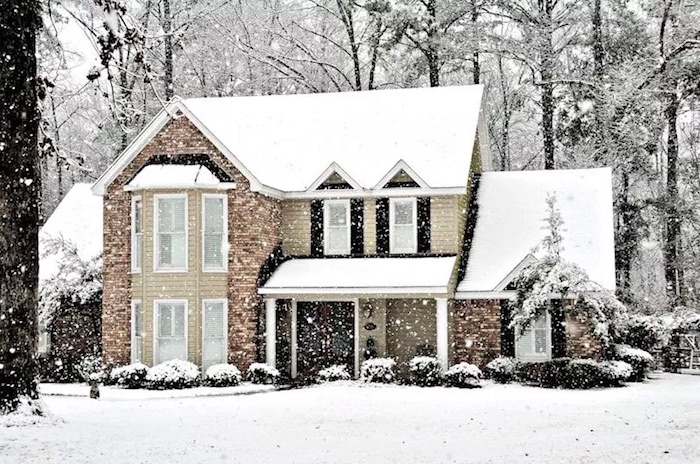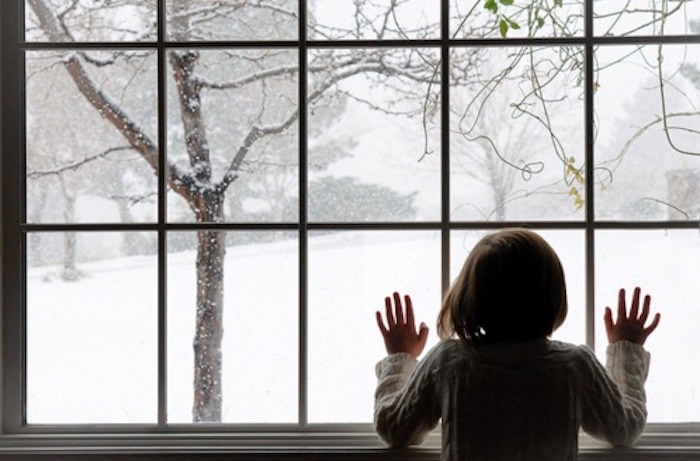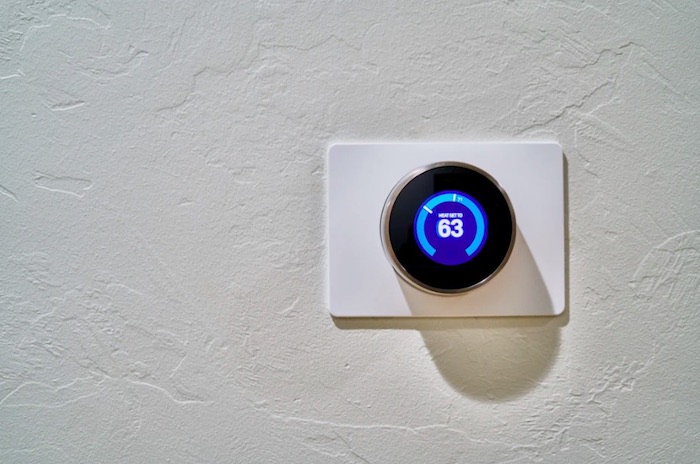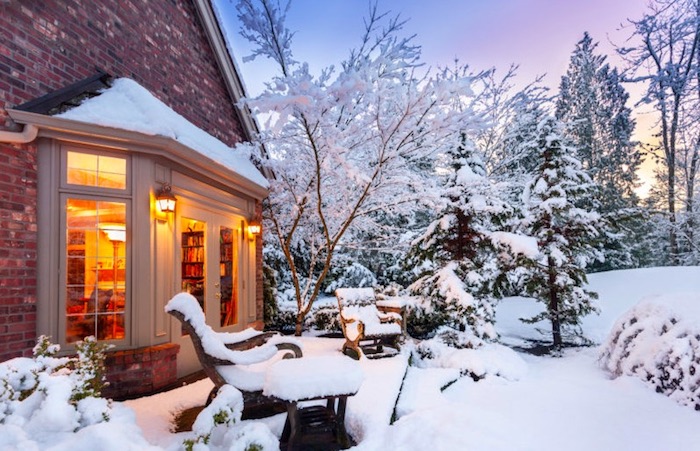
Whether you live in a region that gets outrageously cold or not, making sure your home is prepared for winter can avoid massive repair costs due to pipes bursting, the surprise of a huge electric bill from trying to keep a leaky home warm, and much more.
If your home is going to be vacant for the winter, get ready to conduct some extra care before you leave. The best time to winterize your home is before the winter season sets in, so get prepared with our tips on how to protect your home and winterize your house.
Winterizing Your Home Inside & Out
**Click to auto scroll by section
1. Insulate the Pipes
Protect your pipes from bursting by insulating them. You’ll want to do this through your attic and other non-heated areas.
When the water in your pipes freeze, the ice expands and blocks the pipe completely. This causes water pressure in the pipe to increase and, if too much pressure develops, it’ll rupture and you’ll end up with a bad case of flooding.
When freezing temperatures are coming, allowing your faucets to drip can relieve pressure on your home’s water system and help to winterize your home.
Tips for how to winterize pipes:
- Disconnect, drain and store garden hoses.
- Insulate unprotected pipes with pipe sleeves.
- Find your main water valve shut off for emergencies.
- Shut off the water lines if your home will be vacant.
- Seal any foundation vents, cracks or openings in walls where there are pipes.
- If your exterior faucets have cut-off valves, close them and drain the faucets. If not, insulate them with foam facet covers.
2. Maintain the Water Heater
Wrap your water heater in an insulation blanket if it isn’t well insulated where it stands.
If your house will be vacant or water will not be running through the pipes, you should:
- Cut off the water supply by turning off the water valve.
- Empty the water heater.
- Drain house pipes by running faucets until no water comes out.
- Fill fixtures with an anti-freeze solution.
Need water heater disposal? We’ve got you!Learn More ❯
3. Check Doors and Windows

Leaky windows or cracks in walls or insulation can let out the warm air your HVAC is working so hard to supply. Blocking air leaks can save 5% – 30% of your energy use. Most drafts are underneath doors and windows. To fix this you can:
- Get a draft snake for doors
- Purchase weather-resistant caulk for your windows.
- Weather strip crawl spaces that leak cold air into your home.
- Installing storm windows and doors can increase your home’s efficiency by 45%!
While new windows can be pricey – they can increase home value which is never a bad thing if you ever move. You could also replace old windows with energy-efficient alternatives and call it a day. Either way, you’ll save yourself money on your energy bills.
4. Conduct a Home Energy Audit
You can call your local power company and see if they do energy-saving assessments. It’s usually free and they identify changes to make your house more energy-efficient and save you money. Make sure your house is well insulated or else you’re fighting a downhill battle.
You can also save energy by reversing your ceiling fans. Yes, it’s a thing! Most fans have a small switch on them. All you have to do is push it to make it rotate clockwise.
It seems weird that fans can keep you warm, but they rotate clockwise to push warm air down and throughout the room. Pretty cool!
5. Adjust the Thermostat

If you’re leaving your home vacant for the winter, do not let it fall under 55 degrees Fahrenheit. On top of wrapping your pipes, keeping your house above this temperature will help ensure your plumbing is protected and you’ve properly winterized your house.
🥶 Want to get old items removed but don’t want to venture out into the cold? Consider hiring us for your no-contact junk removal! We haul it all away in any weather so that you can stay warm.
6. Inspect the HVAC System
Make sure the HVAC (heating, ventilation, and air conditioning) system is running efficiently and securely. You can either hire someone to do it or if you’re confident you’ll do a thorough job, just do it yourself. These winter home tips will make sure you’re not only safe but that your house isn’t wasting energy while trying to keep you nice and toasty.
When inspecting your HVAC system make sure you:
- Check heating ducts
- Clean motor and fan
- Examine blower operation
- Clean and replace air filters
- Check carbon monoxide levels
- Inspect gas piping to the furnace
7. Store Outdoor Equipment
Even your mowers and trimmers need love too. If you’re going to store them away until the spring, make sure you refer to your owner manuals to make sure you’re completing the proper maintenance before putting them away for hibernation.
However, if your mowers, trimmers, tools, etc. have been loved enough during the summer, don’t bother putting them in storage. They’re just going to take up space, collect dust, and give you more to deal with when spring finally comes back around.
Lawnmowers are recyclable since they’re mostly made of plastic, steel and aluminum alloy. You can contact your local government to find out if your local recycling center will accept your specific type of lawnmower. If not, you can always depend on LoadUp to help you with disposing of an old lawnmower, leaf blower, gardening tools, and more.
Getting rid of outdoor equipment? BOOK A PICKUP ❯
8. Store Outdoor Furniture and Grills

If you don’t have a storage unit, garage, or basement where they can stay for the winter, wrap them in thick covers to protect them. After dealing with summer, the cold temperatures, snow, and ice to come can further damage outdoor furniture and grills.
If your furniture is looking weathered and sad, save yourself the storage space and get rid of them. You can donate, recycle, sell, or hire a junk removal company like LoadUp to take care of outdoor furniture removal and disposal for you.
9. Protect Your Plants
Don’t let them face the cold all alone! To protect outdoor plants, you should:
- Bring most plants inside when temperatures dip below 45 degrees.
- Mulch with organic material to help release nutrients into the earth for the season.
- Wrap tender tree trunks with burlap or whitewash them to prevent plant tissue damage.
10. Prep and Clean Your Fireplace
Hire someone to clean your chimney before you light your first fire to make sure you don’t end up with a house fire or hazardous situation on your hands before even getting started with the chestnuts roasting on an open fire and making smores in your living room.
Animals can nest inside fireplaces and creosote, a dark brown oil distilled from coal tar, can build up in your fireplace. Creosote has been determined by EPA that it is a probable human carcinogen, meaning it can cause lung cancer if inhaled.
Winterizing Your Home is Snow Joke ❄️
If you follow our tips you will be on your way to a well-prepared home. Winterizing your home makes it more energy-efficient and will keep you and those you live with snug as a bug. So don’t be afraid of putting in a little extra effort because not only will your home thank you, but so will your wallet.
Related Articles from the Trash Talk blog:

